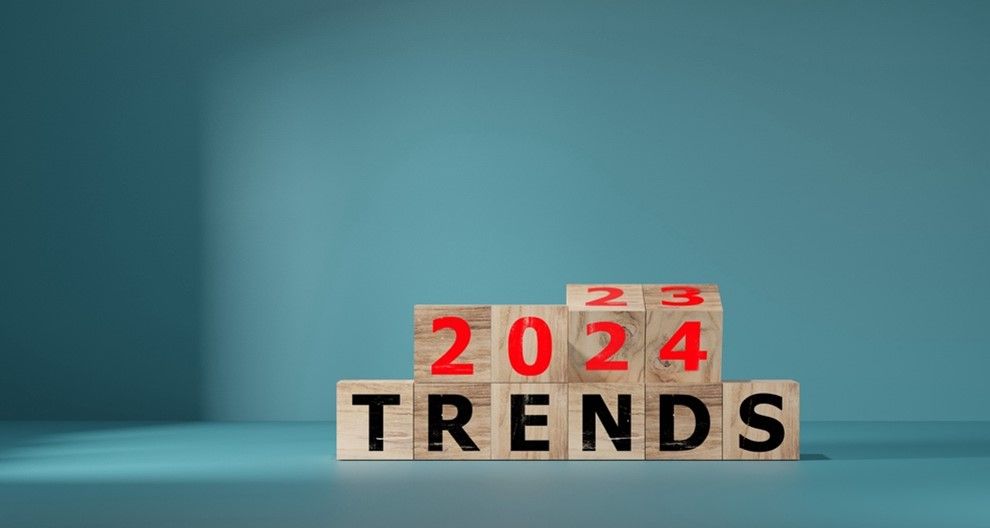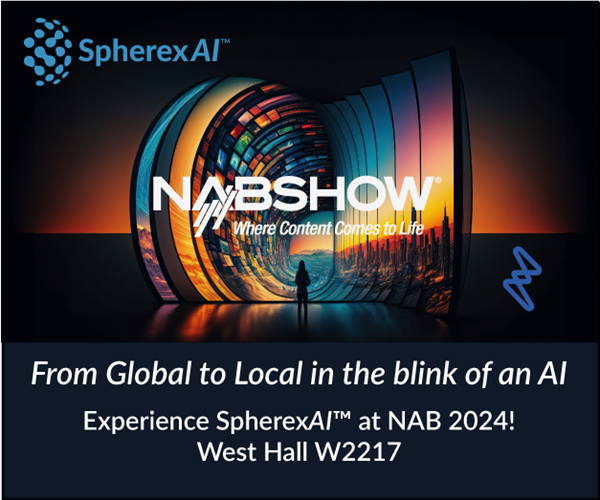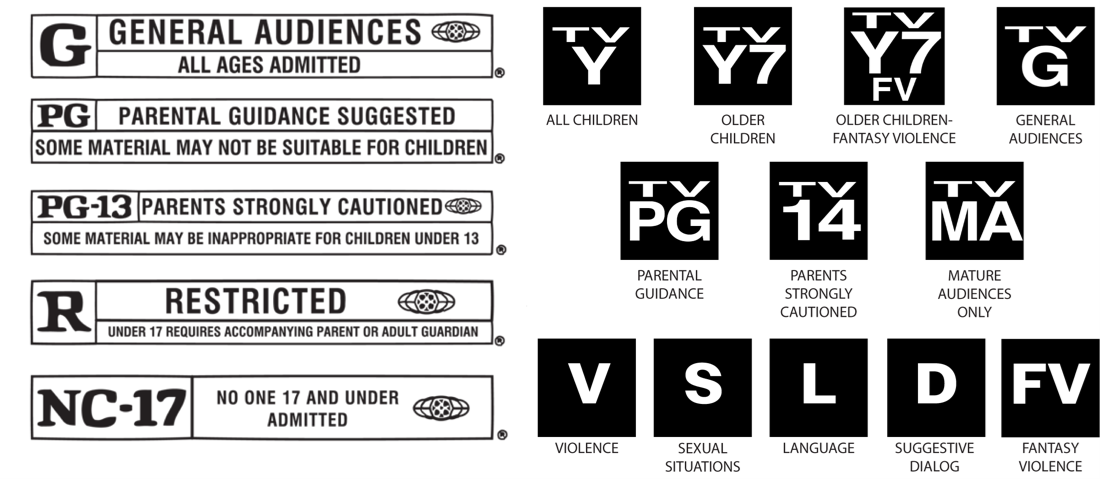Cutting-Edge Uses for Artificial Intelligence and Machine Learning In Streaming
Trust is key in any relationship, even (or maybe especially) with artificial intelligence/machine learning. The premise is that with enough training and modeling, software will provide insights that would not have been apparent to mere mortals. All the solutions providers I spoke with for this article say they rely on machine learning to generate analysis and also count on additional contextual information to supplement the software, to make sure that the recommended decision has appropriate context.
The top use of AI/ML which 58% developers expected to use according to the 2020 Bitmovin Developer Report, was for creating recommendations. 50% of developers expected to use it for personalization. The previous year, their survey showed that more than 30% of developers were preparing to use AI/ML. But there are plenty of other uses for AI/ML, and those are what we'll focus on in this article.
Some companies spoke about AI/ML like it was a magic black box with their own proprietary special sauce. Without more details, I just don't have that much trust. What I do understand is algorithms are trained on data, and getting that data into a consistent format is a large, intensive exercise. The AI/ML is taking data, which is either unstructured in some way or inconsistent, and then generating a consistent set of categories or structured knowledge. "It's not the data per se, it's making sure that the AI itself is perceiving the data in the correct way," says Randa Minkarah, co-founder and chief operating officer, Resonance.AI.
"It's hard to say how long it will take [to do data normalization], but delivering smart algorithms that produce insights is a function of the size of data sets; the more subscribers and engagement actions you have, the faster you can perfect it," says Paul Pastor, chief business officer at Firstlight. "It's a volume and throughput game: A company with the scale of a Netflix can refine algorithms very quickly; for a service with a couple of hundred thousand subscribers, it's going to take longer."
Unstructured Data
According to a Gartner report in 2019, 80% of your data will be unstructured in the next 5 years. One of the biggest problems with all this unstructured data is identifying what's within the content. To gain insight into the unstructured data of video, there are small and large companies alike working on building machine learning models for tasks like sentiment analysis, named entity recognition, topic segmentation, text summarization, relationship extraction, mood, activity, color, locations, QoS, translation and sub-titling, contextual advertising placement and more.
"I think media companies are considering AI and ML. I don't think they've adopted it anywhere near as much as they can," says Minkarah. "I think that they're still wrangling their data to an extent, and figuring out how do I deploy this (platform) and make it meaningful. I think that it's hard to deploy AI right now without having a consultant or a consulting group help you operationalize it."
A common complaint I hear is content metadata isn't standardized to the extent it needs to be. Which means when moving to a new OVP or CMS, there may be a lot of work involved in filling in the blanks. "We do use Gracenote and ROVI data to normalize, but even their data sets may not be complete," says Pastor. "Plus an OTT provider that wants to develop a competitive advantage might want to capture more data than is widely available."
Likely your existing vendors have something using AI/ML. The question is, what's worth trying out now?
To the Cloud and Beyond
About half of their customers are using AI/ML within their workflow, says Simon Eldridge, chief product officer, SDVI. "It's certainly more than we're doing it two years ago. It tends to not be the first thing that a customer does [it's more like the second focus]." The first thing on many customers' roadmaps is actually migrating to the cloud, getting their content there, and moving their supply chains. "After they've done that initial work, then the AI tools are really an optimization cycle."
"The thing that I think has happened is there are many more smaller, single-purpose AI tools that do one thing like content deduplication, comparing the content, as people migrate to the cloud from multiple different sorts of storage," he says. "It's pretty common that you bought the same thing multiple times over because maybe you had it in your tape library and on spinning disc somewhere." I like this approach, because it tells me I haven't been hording copies of something in multiple locations and just like Marie Kondo suggests, clutter is bad.
Text Identification
Identification of text within content is another AI/ML focus. "For internationalization you don't want the [the wrong language in the] lower thirds," says Eldridge. Another SDVI tool scans for text and identifies the time code for the offending characters. While locating text seems pretty straightforward, a number of companies will identify wholesale transcripts of what's within the content. While we've also covered this before, it bears repeating that scanning hundreds of hours of content will take hundreds of hours without AI/ML.
For news and entertainment production Digital Nirvana offers "The ability to automatically generate a transcript of a feed automatically [using our recently introduced Metadata IQ SaaS product]," says CEO Hiren Hindocha. "If you're running a news organization and it is ingesting hundreds of feeds from different sources. Today the problem is that there aren't enough people to tell you what is in the feeds. There's just more data than can be humanly looked at."
They generate a transcript of a feed automatically to summarize what's in each feed. "We'll be able to allow the analyst or the editor to say, okay, this feed looks interesting because it has this and that. The data has been summarized by the machine."
Digital Nirvana's Trance generates transcripts automatically in multiple languages.
"Today what the system does is it generates transcripts of the audio feed that is coming in. The visual side of it is doing facial recognition of the content to be able to say that I'm seeing Rachel Maddow in this, in this video feed at this point in time, I'm seeing President Biden at this point in time." Also on the roadmap is the ability to summarize content and to identify the important concepts.
Contextual Advertising
Contextual advertising has become an important category because of the privacy restrictions which have happened in Europe and the US. For a while I've asked how people are doing this and till now I haven't had a satisfactory explanation.
"We've be working on associating the AI to recognize and categorize video based on IAB taxonomy," says Mika Rautiainen, CEO of Valossa Labs. That taxonomy contains lots of these advertising targeted topics for the entire piece of content, as well as specific parts of the content. "We have developed AI to be very detailed, so that it finds even sections within the video where this advertisement categories have been portrayed."
"It can recognize grocery shopping at the beginning of the video. Then there's cooking in the middle of the video and at the end that might be an alcoholic drink or beverage. These categories are easily digestible," he says. "We provide this IAB categorization that gives you advertisable categories for the entire video piece. For this example, since alcoholic beverages is one of the categories that is popping up and is considered to be a sensitive content category, any advertiser who wants to exclude this they can decide if the content is brand safe." Creating a list of timecodes exactly where these topics happen make inserting a contextual advertisement very accurate.
Flagging Content
Content identification can be used to automatically identify specific actions. This might include sports activity like goals, homeruns, baskets, etc. or for controversial events like identifying violence, nudity, sexual behaviour, smoking, drinking and drug use. There are two ways to accomplish this.
"If your job is content internationalization, for example, previously, you would have watched a show and it would have taken two hours or whatever to go through and find the bad bits and cut them out and make a new version," says Eldridge. "Whereas now they can do it in 10 minutes per show because they're not watching the whole thing in slow motion and looking for things, they're using markers on the timeline to say, show me the next event."
Automated Trailer Creation
Several years ago there was an effort to build a short film using ML/AI called Sunspring, which was very funny, but not very sensical. Even today, I've been assured I wouldn't be able to tell if something was written by a piece of software or a person. While I do think I can tell, there are uses which don't require very complicated applications. Creation of trailers and highlight clips are both good uses for AI/ML.
"[Commercial] Broadcaster MTV 3 in Finland is using our AI to create promotional highlights of their TV series and movie trailers for their video on demand platforms," says Rautiainen. This broadcaster doesn't have the resources to create trailers for all of their content, but Valossa does it for them. "They are really creating more dynamic and engaging consumer experiences within those services and helping customers to get into the content faster to assess and understand whether the content is appropriate." "AI is actually generating multiple outputs, it looks into the content once and then produce lots of different outputs. One might be action oriented, another one is more emotional," he says. The trailers are much better than Sunspring.
Content Matching
Matching video content to webpages has been something JW Player has been doing for a few years now. "We do have a lot of metadata that is associated with video, like descriptions and sometimes captions and transcripts," says chief technical officer Dave LaPalomento. "So we're able to pull out the thrust of what the video was about matching those two things together, which is something search engines have been doing for a long time."
The primary thing you need to do is put a little bit of code into the pages to which you want article matching applied. The code will be replaced with selected video match for an that article. You could also apply business rules to it if you're so inclined. Is anyone still doing this by hand, or has content matching via AI/ML replaced the human editor? "It's got a decent base now, but we still see a lot of room to grow across our customers."
Quality of Service
There are a number of different tools in this bucket. "Our mode of measurement is by inserting an SDK directly into the streaming publishers apps to measure full census, real time continuously," says Aditya Ganjam, chief product officer at Conviva. "We measure the viewer's experience—their engagement, behaviors, what they're watching, what device they're on, where they are."
Any given time there may be in 20 or 30 million simultaneous streams playing and they provide actionable insights to dev ops, engineering, product, marketing and ad monetization teams using AI and ML to determine a root cause to what people are reacting to. "We're more focused on finding insights from data that either automatically or human can take action on," Ganjam says.
It used to be all about the aggregate information based on traffic patterns. Now they are seeing more attention to two metrics used for customer acquisition: One is how fast you can acquire customers. Seconds is how long can they be retained for? "We noticed that our customer are actually zooming in a lot more," says Hui Zhang, founder and chief scientist, Conviva.
Cultural Categorization
This next company uses AI and ML to categorise content for appropriate ratings and international distribution required as many more media companies expand further into world-wide streaming distribution. "We've been able to acquire this deep set of knowledge, create our own methodologies, systematize and build technology that helps us identify and classify cultural events," says Teresa Phillips, CEO, Spherex. They use computer vision to look at what's on the video, natural language processing (NLP) to look at the subtitles and a synthesis of independent signals to evaluate content meaning.
The company has classified ratings for content for 200 countries and 246 territories. "The machines take up all the edge cases that we as humans can't possibly sit around and think about and turn into rules. There's a lot of rules that we have generated, but a lot of countries either are inconsistent and how they apply their own rules or their rules are unpublished or unspoken."
Spherex's Greenlight identifies multiple categories of sensitive content, based on classifications for 200 countries and 246 territories.
A recent study in New Zealand showed if there is a school setting where there are incidents of self-harm, people are getting bullied, excessive body art, or if there's eating disorders exhibited on screen, these are triggers for teens.
"[Using AI and ML we've identified] what's suitable for children for nine years old, 12 years old, 15 years old, 18 years old," says Phillips. This is based on what they call classifiable, cultural elements that are found in film and television that cultures care about, like violence, sexuality, nudity, blasphemy, suicide drugs. "Our systems have a set of very complicated rules that when we extract a cultural event, let's say that it's drugs, for instance we have to identify a lot of context around that," says Phillips. "What's going on? Is it just presented on this screen? Is it being used? Is it in a party setting? Is it being sold? Is it glamorized or encouraged? Are there consequences to doing illegal drugs, and then there's kind of a lesson there?"
Honorable Mentions
Now, as opposed to the last time we did this article, there are a lot more active uses of AI/ML. There's also all sorts of things which we didn't include simply because of space limitations. There's compliance logging, including automatic translation and caption generation also from Digital Nirvana. There's full-on metadata normalization from Firstlight media when clients bring new content libraries into their CMS. There's advertising placement optimization from JW Player, helping customers get better prices knowing the ads will be seen and engaged with. There's the whole side of content recommendation and personalization. There's automated editing. CDN traffic management, content engagement evaluation and the list goes on.
The categories here seemed like they are all solving very imminent, clear problems. There are a lot of products on the market promising AI/ML application for advertising for example, where I have a hard time writing about them, simply because their benefits are too murky.
However, this article was about existing use cases. Our article on FAST includes interviews about future use cases using AI/ML which seem very likely, but not yet in production.
There's something to be said for the old adage, "trust but verify." Likely there are areas where AI/ML can be allowed its own, but the thing is models need to be trained, and once trained they continually need care. Do I trust a machine to self-police itself? Nope. While all of these technologies are amazing I still don't trust them fully. Yet.
Source: Streaming Media
Related Posts


SILICON VALLEY
2336-H Walsh Ave.
Santa Clara, CA 95051
+1(408) 550-2344
LOS ANGELES
3900 W Alameda Ave.
Burbank, CA 91505
+1(310) 496-7307









